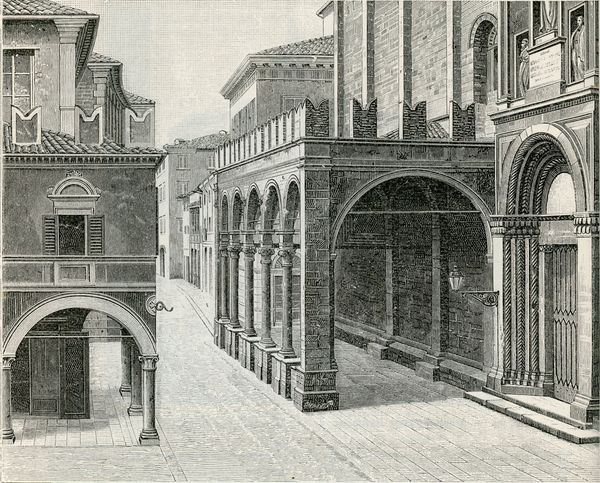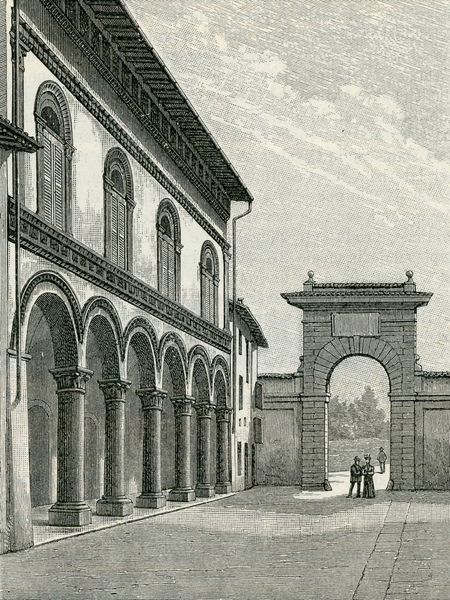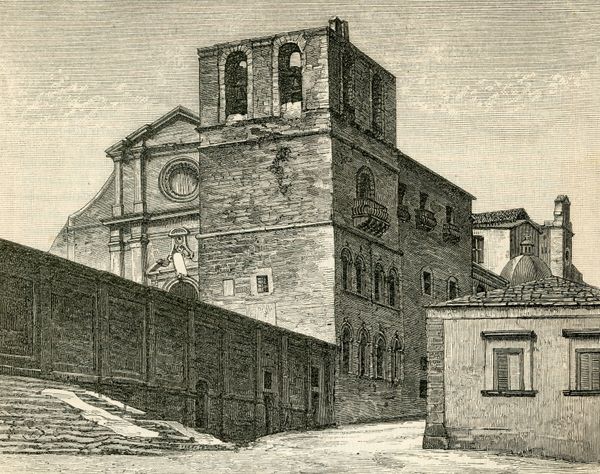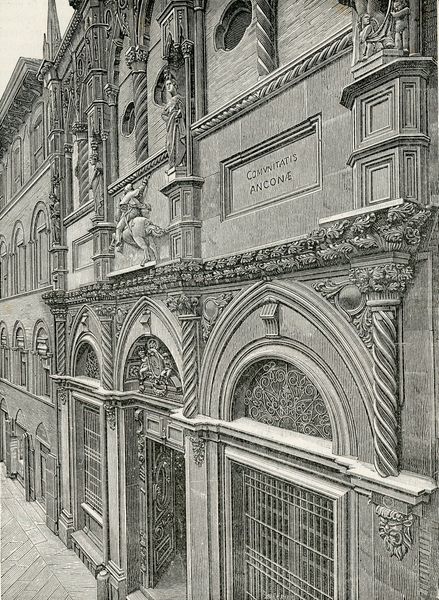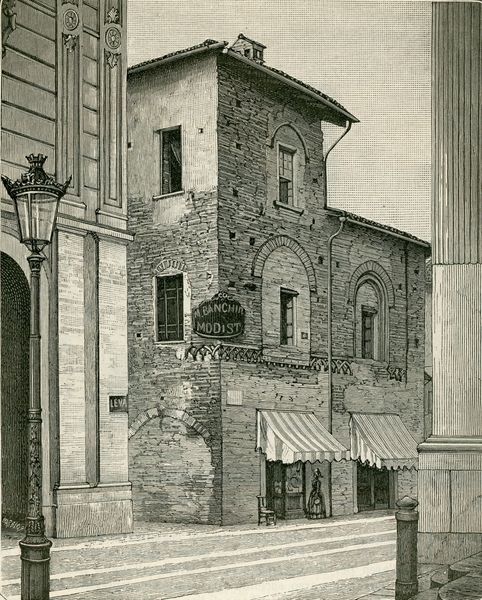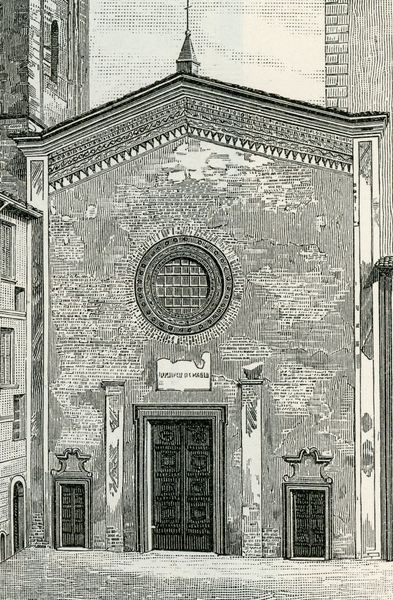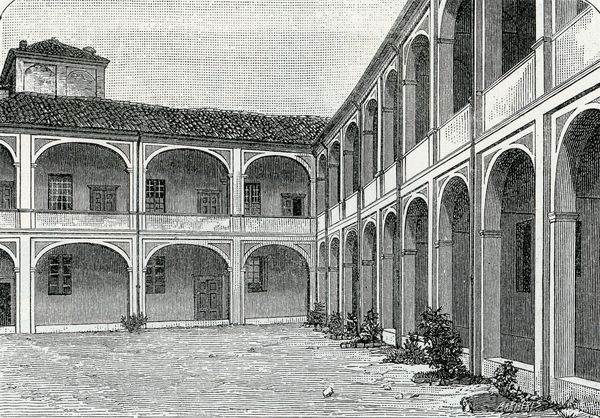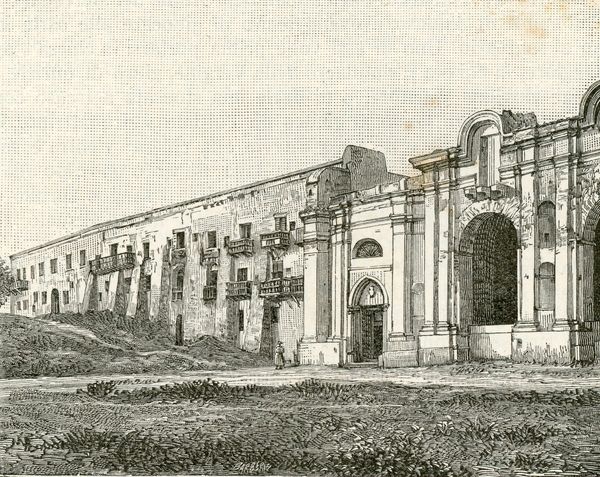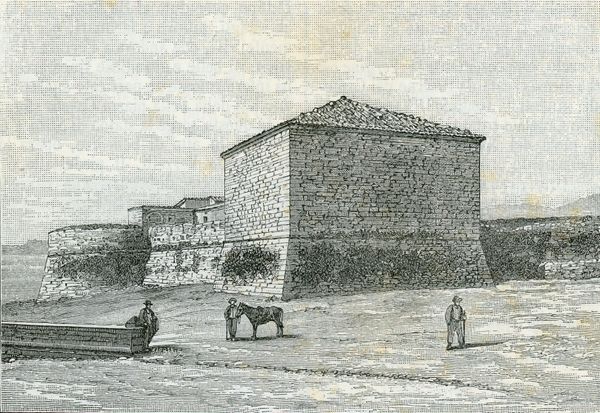
Copyright: Public domain
Curator: Looking at Giuseppe Barberis's pencil drawing "Barriera Vittorio Emanuele" from 1895, one immediately feels the weight and density of the structures depicted. What strikes you most upon seeing this? Editor: The composition. There’s such deliberate linearity; the way the architecture leads your eye deep into the city street, yet those heavy, shadowed gate structures also keep you at bay. There’s a definite push and pull. Curator: The artist, a known architect himself, here illustrates a tangible representation of power, a stark visual reminder of social hierarchies in late 19th century Italy. The very geometry speaks volumes about control and regulation. Editor: I agree, the drawing really foregrounds architectural features: the repeated geometric shapes, the variations in shading, and the layering of form—all serve to emphasize not just structure but also a feeling of constrained space. Curator: Exactly. And that neoclassical style inherently projects the established political structures. The monumental gateway stands not merely as an entrance but as a declaration of the ruling class, imposing order on those entering the city. Editor: You’re right. Even the subdued tonality, that almost grayscale palette achieved through pencil, reduces distraction, forcing the eye to consider line and form alone, lending the composition this profound, austere air. Curator: By studying its composition, the drawing gives voice to urban narratives about privilege and restriction. And so it opens up space for critical discourse connecting the drawing to socio-political ideas and struggles surrounding urbanization and modernity. Editor: Seeing those figures at the vanishing point – it adds a compelling layer, those miniature persons highlight the absolute dominating size of the erected building that acts almost as a sort of theatrical scrim. The artist effectively uses them to enhance that depth. Curator: Indeed, an almost oppressive feeling permeates this drawing, prompting reflection on our physical and socio-political navigation. Editor: For me, Barberis's rendering pushes a closer look at compositional decisions. The effect, ultimately, goes beyond documentation—it stirs something unsettling.
Comments
No comments
Be the first to comment and join the conversation on the ultimate creative platform.

